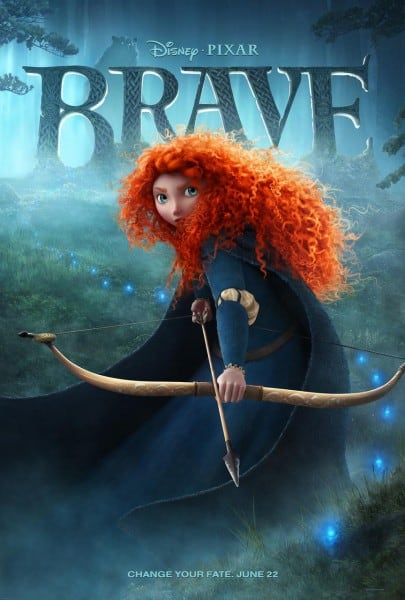Brave was released by Pixar in 2012. At that point, there were no Pixar films with girls as main characters, so this film was welcomed with open arms by people who’d been waiting and waiting for this. Unfortunately, the story isn’t great. Kids are likely to enjoy it — or aspects of it — I know some who fell in love with archery, as a concept.
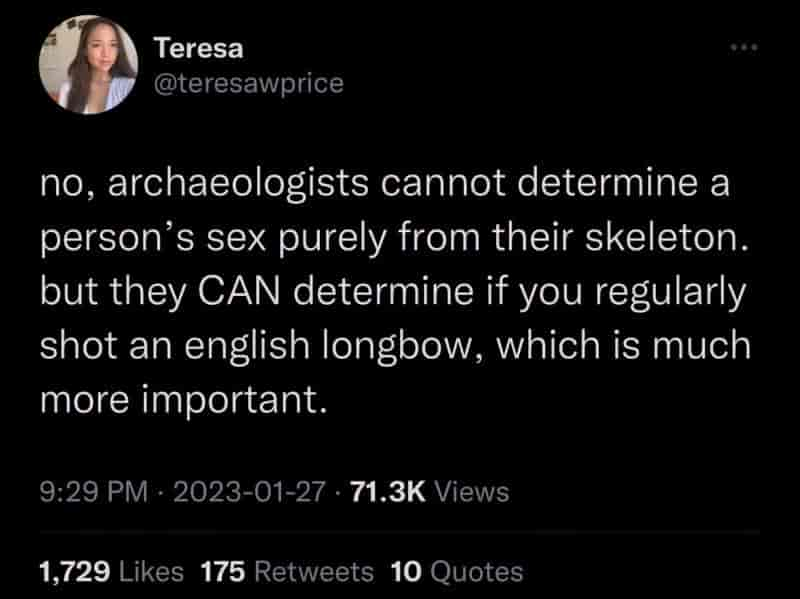
But kids like almost any animation with high production values. Though I don’t count Brave as an example of top-notch storytelling, I’m going back to it to clarify for myself what exactly went wrong, for me. Why do I find this one doesn’t engage? Is it because I’m not the target audience, and shouldn’t be expected to like it? I don’t buy that. Other Pixar films manage dual audience appeal.
A sobering side-story is how Brave went wrong behind the scenes. With so much money and talent available to them, it almost defies belief that a corporation like Pixar could release anything with a problematic plot. The #metoo movement has shown us what any woke viewer has noticed in the ideology of Pixar films all along — that the men running Pixar are faux-feminists at best. As for the Brave story, a woman was originally hired to direct. She was then fired. I believe this absolutely shows in the final product, in a story which shoehorns femininity into a story which doesn’t quite work.
Then again, there’s plenty that is interesting about Brave, as an artifact of half-assed feminism for kids.
THE MAGICAL SETTING OF BRAVE
I gave my mom a cake, she turned into a big bear. My old man tries to do her in. If that’s not a pure mess, I don’t know what is.
@LizzRoinett, Twitter video
A fantasy medieval Scotland. This is ancient Scotland in the same way Princess Mononoke is ancient Japan — it’s a vision of the past according to a contemporary audience, when we imagine the world really was ruled by magic. In both Brave and in Princess Mononoke, you’ll find magical spirits in the woods. Here they are known as ‘wisps’ and they play a critical role in the plot, leading Merida first into the witch’s cottage, next on her journey of discovery as she finds out what happened to that guy who asked the witch for strength. (He turned into a bear and stayed like it, upping the stakes for the mother.)
I think this part aspect hits on why I found Brave lacking as a satisfying story: First the audience is told that we must believe in magic. I have an issue with this general ideology. Merida’s father says he doesn’t believe in magic. He is proven wrong as the audience is shown the wisps on screen. “Well he should because it’s true,” says Merida, our viewpoint character. Of course, she means it’s true within the world of this particular story. But I feel we have a problem with magical thinking across contemporary society, and it bothers me when a sympathetic viewpoint character in a story basically tells the audience that you’re fool for not believing in magic. There are ways of writing magic into stories which don’t chastise anyone for failing to trust and believe. I prefer those ones.
That aside, there’s a narrative drive issue to do with those magical wisps. The writers faced the problem of getting Merida into the woods (why would she go, and how would she know to go?). She follows the wisps and they show her. Later the writers had the exact same problem (how would Merida find the castle ruins)? Easy fix. We’ll have her follow the magic again, literally. Where’s the self-determination in that?
Does Merida do her own problem solving? No.
Is there an intriguing mystery to be solved by the young hero? No.
“Follow and you will believe!” is reinforced as the dominant ideology when she is shown to follow the wisps. Can you think of a popular story in which a boy character simply believes in magic and follows it, achieving enlightenment forthwith? I cannot. Because that wouldn’t be satisfying, would it. It’d be too passive for a boy. I argue it’s too passive for a girl, especially when it’s been established early on that Merida is a dab hand with bow and arrow. I’m not arguing for a big struggle scene where Merida shoots the opponent with an arrow. That’s not what I’m arguing for at all. That would be a classic knight character in a girl’s body, embarking upon a classic, linear male mythic journey where the hero meets a variety of characters and then defeats the big bad one at the end, coming to some major self-realisation.
I feel Brave is an attempt at the new big struggle-free myth form. And who knows — it might’ve been if the original female screenwriter had been allowed to continue where she was headed. The big struggle-free mythic form is where a character (often a girl but not always) thinks and feels her way through a situation rather than fighting her opponents. Inside Out was a later and successful example of that. Instead, what we have in Brave is a weird hybrid in which Merida goes on a literal journey (a mythic journey), which is basically linear in shape — symbolised early on by the arrow when the father exclaims “Fate is like an arrow!”(It’s not just the theme of this story which is likened to an arrow, but also the linear shape of the plot.) In a linear structure, the character is obliged to solve their own problems, okay, yes, often by fighting in some kind of big struggle, but still, they’ve solved it themselves.
This is why it bothers me that Merida is lead through the forest by wisps. Merida does indeed solve her own problem. We know she has, because she arrives back at the castle during the masculine, rough-n-tumble escapades and delivers a big speech. This feels a lot like Pixar’s good ole Female Maturity Formula on steroids — I’m sure the antics of the little brothers and the men are meant to provide the bulk of the movie’s humour. (I personally find rough n’ tumble boring to watch.) Meanwhile, both Merida and her mother sit and roll their eyes at the boyish antics going on around them. However immature Merida is at the beginning of Brave, the father’s descent into wild behaviour shows that she was always more mature than him, in many ways. When the father pretends to be Merida, imitating her voice near the beginning, it’s made clear to us that father and daughter are very much alike. This point is underscored time and again. But really — gender flip that for a moment. Can you imagine a story with an uptight father sighing, and complaining to his wife that their son is just like her as he pushes the boundaries? The writers of Pixar have hit upon a fairly common real-life gender dynamic — the dynamic of the sensible, uptight mother counterbalanced against her wild husband and the offspring who uses him as role model instead. I believe this story is meant to set up that dynamic in order to challenge it entirely. But a weak anagnorisis phase makes me wonder if subversion has really been achieved, or if the audience walks away seeing yet another example of sensible women juxtaposed against wild men.
Merida’s anagnorisis — that everyone needs to learn to work together — doesn’t feel earned. This is directly related the the magic of the setting, and how the writers relied too heavily upon those wisps to lead her to her mature understanding of co-operation and whatnot. Big audience scenes can sometimes be an attempt at papering over a subpar revelation sequence, so I’m quite wary of them. I’m talking about scenes — beloved by American storytellers in particular — in which a main character addresses a large audience and delivers a monologue. The larger the audience, the more important the revelation, or so the writers would have us believe.
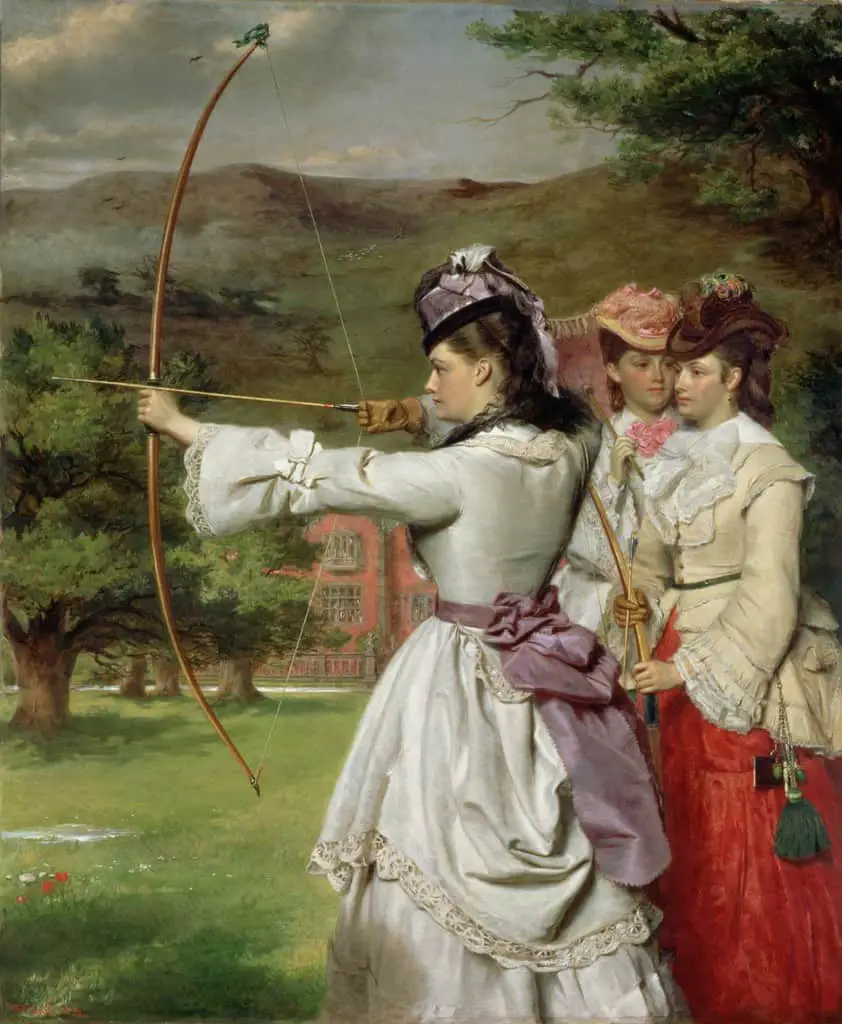
STORIES ABOUT MOTHERS AND DAUGHTERS
On its release, critics tended to focus on the fact that we now have a mother-daughter relationship. Critics see a lot of stories, and they noticed that the mother-daughter relationship is rarely depicted.
Film critic Roger Ebert said that kids would like it more than adults. He said that Brave did have an uplifting message about improving communication between mothers and daughters, “although transforming your mother into a bear is a rather extreme first step”
Peter Debruge of Variety said that “adding a female director, Brenda Chapman, to its creative boys’ club, the studio Pixar has fashioned a resonant tribute to mother-daughter relationships that packs a level of poignancy on par with such beloved male-bonding classics as Finding Nemo“. Finding Nemo is of course a story about a father-son relationship, as is The Lion King.
When Pixar took me off of Brave — a story that came from my heart, inspired by my relationship with my daughter — it was devastating. … This was a story that I created, which came from a very personal place, as a woman and a mother. To have it taken away and given to someone else, and a man at that, was truly distressing on so many levels.
Brenda Chapman, after her firing
It’s clear that Brave is meant to be a mother-daughter story by intent, and should have been written to its completion by someone who has been a mother and a daughter themselves.
Western civilization has a double standard about parenting. As Mary Pipher notes in Reviving Ophelia, relationships with fathers – in literature and film – are almost always portrayed as being productive and growth oriented, while relationships with mothers (especially for children during their adolescence) are considered regressive and dependant. Mothers cannot be involved too much or too little – their involvement has to be precisely the ‘right’ amount. Distant mothers are scorned, even as their close and loving counterparts are criticised for being smothering and overprotective.
Tharini Viswanath
Although Merida’s character arc doesn’t feel enfleshed to me, the mother’s arc works nicely. By turning into a bear, the mother learns to get in touch with her baser self. This is an example of a story in which two characters learn something from each other. The daughter learns to understand her mother and the mother learns something from her daughter. Brave is basically a Freaky Friday story, which also makes use of the transmogrification trope (used a bit differently). Lady Bird is another mother-daughter story and an excellent example of the double character arc in which everyone’s arc feels very much earned. The Meddler is another.
Whatever my storytelling problems with Brave, I’m grateful for the mother-daughter relationship. The target audience will have seen relative few stories about mothers and daughters, because there are very few mothers in picture books, let alone mother-daughter relationships. This was written in the 1990s but hasn’t changed much:
In the most comprehensive study to date of the mother/daughter relationship as it is manifested in picture books, Adrienne Kertzer explores the silencing of the mother in picture books. Kertzer analyzes the multiplicity of techniques used to suppress mothers’ voices in picture books. Her thesis, that mothers’ voices are silenced in ways that the voices of other adults are not in picture books, is relevant to an investigation of mother/daughter relationships in children’s novels. Kertzer speculates that mothers’ voices are marginalized as a result of the cult of perfect motherhood and as a result of the desire to promote children’s points of view in children’s literature. Kertzer then deconstructs a central irony of the image of the mother in picture books: mothers read picture books to their children that show mothers to be silent.
Roberta Seelinger Trites, Waking Sleeping Beauty
This symbolic annihilation of mothers abates a little in middle grade stories but not much:
These points are germane to children’s novels, for interestingly enough, the voice of the mother is more often heard in contemporary children’s novels than it is in picture books. That this phenomenon coincides with the time that the child is no longer dependent on her mother to read to her is interesting; it indicates that children can accept strong literary mothers as they grow older and become more sure of their own voices. This is not to imply, however, that children’s novels are replete with maternal voices, for this is far from the case. Whether feminist or otherwise, more children’s novels omit maternal subjectivities than include them.
Roberta Seelinger Trites, Waking Sleeping Beauty
Possible reasons suggested by Myers:
- The authors of these stories may wish to have been beter mothered themselves
- Female authors may lack strong artistic mothers and mentors, so they transfer their own symbolic motherless to their writing — female characters are also motherless.
I don’t think we need to get so deeply into the psyche of the creators of these stories — the dominant culture does a fine job all on its own of minimising mothers. Lack of interest in motherhood for anyone other than mothers could account for 100% of it.
Seelinger Trites points out the very good story reason why mothers are omitted from children’s stories. I’ve covered it in my post Why So Many Orphans In Children’s Literature? Trites acknowledges the plot reasons for getting rid of mothers, but argues there’s more to it than that:
While this tendency has fit conveniently into the commonplace of children’s literature that parents must be absent from the narrative in order for the child characters to have adventures and to explore on their own, it seems that as feminism has influenced the culture, strong mother/daughter relationships have begun to infiltrate the children’s novel.
Roberta Seelinger Trites, Waking Sleeping Beauty
Seelinger Trites has noticed two main types of mother/daughter relationships in children’s stories.
1. OEDIPAL NARRATIVES
Oedipal narratives are all about allowing for the daughter to achieve independence from her mother.
They tend to focus on the daughters’ strength. The best stories in this category allow both mothers and daughters to be strong. Both mother and daughter go through a character arc. That’s why I loved the film Lady Bird so much.
Examples
- Prairie Songs (1985) by Pam Conrad
- Plain City (1993) by Virginia Hamilton
- My Mother, Myself by Nancy Friday is a non-fiction feminist work which is all about the Oedipal relationship between mothers and daughters.
There are Three Main Types of mythic structures, and in two of those the hero is required to leave home. Leaving home is a surefire way for getting a hero to separate from his mother (and father). And if you read the really early recorded fairy tales, e.g. in the first volume collected by Grimm, you’ll find a lot of those start with a son who goes out wandering, with no specific aim in mind.
2. FREUDIAN NARRATIVES
Freudian stories allow the daughter to mature without necessarily breaking her from her mother.
The Freudian structure can be done well, but so many of them are ‘rebellious-daughter’ stories which portray mothers as evil beings, whose stifling presence must be escaped in order for the misunderstood daughter to develop fully. Mothers in these stories don’t have a character arc of their own. Far from it — they are one-dimensionally portrayed as controlling and manipulative. We don’t get the mothers’ backstory. In other words, these books are reductive in their portrayal of mothers.
Examples
- Dinkey Hocker Shoots Smack (1972) by M.E. Kerr
- Deenie (1973) by Judy Blume
3. ANTI-FREUDIAN NARRATIVES
Perhaps another third category could be called ‘The Anti-Freudian Plot’. Seelinger Trites offers this as a type, though doesn’t include it in her two main categories.
In anti-Freudian narratives, the daughter is not required to separate from her mother.
In fact, the mother helps her daughter through her trials. The mother will probably pass some of her strength on to her daughter. A story with this character web is likely to be about the nature of maternity, and may link maternity to death. They often have messages such as: nurturing others is hard work but also good for the soul.
So where does Brave fit into this history of mother-daughter relationships? To know this, I ask the following questions:
- Is the mother Merida’s main opposition?
- Does Merida need to separate from her mother in order to be ‘free’?
- Is the mother a rounded character in her own right, or one-dimensional?
- Do we get any of the mother’s back story?
- Does the mother undergo her own arc?
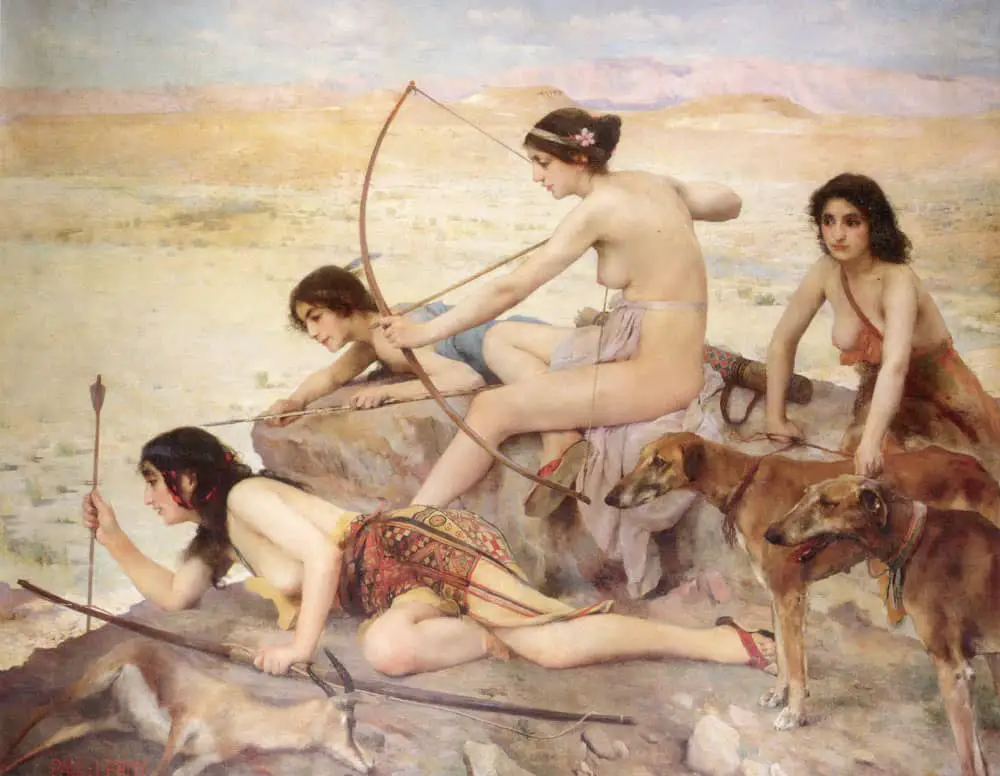
BRAVE STORY STRUCTURE
The story in a nutshell:
Not only does the protagonist have a mother who is seen and heard, but both mother and daughter spend more than half the movie renewing their strained relationship. The protagonist, Merida, is at odds with her mother, Queen Elinor, because she prefers traditionally ‘masculine’ activities to performing the duties of a princess. When Elinor invites the sons of neighbouring clan leaders to compete for her daughter’s hand in marriage, a fight ensues between mother and daughter. Incensed, Merida buys a spell from a witch to change her fate; as a result of Merida’s actions, Elinor turns into a bear. Elinor and Merida then try to reverse the spell by ‘mend[ing] the bond torn by pride,’ which Merida interprets to mean sewing together a tapestry she tore during their worst fight (Brave, 2012). Meanwhile, Fergus, the King and Merida’s father, has a vendetta against bears, and will not rest until he has avenged the leg he lost in a bear attack.
Tharini Viswanath
SHORTCOMING
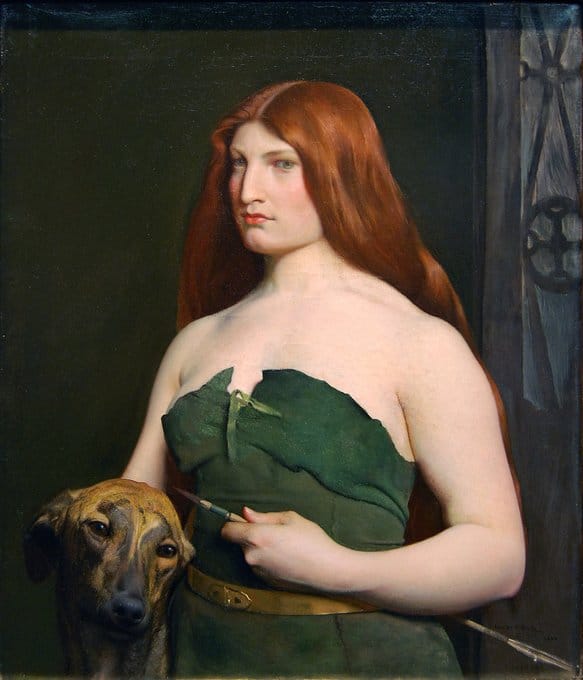
This is not a story in which a repressed female character with no voice learns to discover her voice. Merida knows her mind from the beginning of the story, which is exactly the thing that makes Brave a slightly different take on the Female Maturity Formula:
Merida … clearly has a voice early in the film. And by standing up to her parents and refusing to go through with the betrothal, it does seem as if she has both agency and an established subject position as a headstrong tomboy. She uses her mother’s language – ‘That’s what you’ve been preparing me for’ – against her, to establish her own position on the issue. Merida represents the capacity to act independently of social restraint: her vehemence at the idea of marriage does, in a way, make the viewer question dominant social ideologies, especially as Merida opposes the marriage plot trope, where Disney Princesses before her rarely question the concept of falling in love and/or getting married. (As a matter of fact, the heteronormative romance between princesses and young men they hardly know drives the plot of almost every Disney film.
Tharini Viswanath
Merida’s shortcoming is that she has contemporary (2012) feminist attitudes but lives in medieval Scotland. She needs to live as an individual with some autonomy, and for her, this means eschewing an arranged royal marriage.
DESIRE
Here’s an interesting word. Adrienne Rich* wrote of ‘matrophobia’. It doesn’t mean ‘fear of one’s mother’. It means ‘fear of becoming a mother’. Merida’s story is defined by what she does not want more than what she does want: She does not want to become her mother.
‘My whole life is planned out, preparing for the day I become… well, my mother.
Merida in a voiceover
Marina Warner calls stories about the psychosexual fear of marriage and childbirth ‘Fear of Engulfment Stories’. I make the case that Brave is a bowdlerised, contemporary take on a Bluebeard tale.
*And because I’ve mentioned Adrienne Rich, let’s also mention this:
what I’m trying to tell you is that there’s a very influential book that argues for the “mandating” trans people “out of existence” (verbatim) and that this book was edited by Adrienne Rich
what I am not telling you is that Adrienne Rich is a “complicated figure.” this is not some Gloria Steinem apologizing blandly in the 2010s type situation. what I am telling you is that Adrienne Rich edited a book that calls for the mandating of trans people out of existence
what I am telling you is that this book has had enormous consequences for trans people, particularly trans women, particularly in north america and the UK
I live in a poetry community where you mention her name to me and you don’t mention this
I live in a poetry community where you mention her name in public where you know I sometimes am and you do not mention this
and yes, you are right, she is a “complicated figure.” I also enjoy the poetry and have been influenced by the thought of Adrienne Rich
we would like to talk about Adrienne Rich. you are a feminist poet, or a feminist critic, and you have an investments in what is called “feminist thought.” but somehow, you are concerned only w rehabilitation. you have no interest in accounting for The Transsexual Empire.
this is not a part of your feminist project
so if I have ever seemed, at times, a little too angry, paranoid, or resentful, it is because you mentioned, in front of me, sometimes to me, many times, many times, a woman who had edited a book that says I should be mandated out of existence
and you did not mention that fact, and many times you did not know it, and when I told you you became upset, and I comforted you
so I live on another planet from you I guess, and I will not be meeting you, because how can I? how can I do what you’ve asked of me? if I did what you are asking of me, I’d go mad from a deficit of dignity
@supermattachine, Stephen Ira, who wrote a poem about this.
OPPONENT
Opponents don’t have to hate each other. Many opponents love each other, especially when one is the parent, another the child: Elinor does have Merida’s best interests at heart: “What I do, I do out of love.” What makes Elinor an opponent is that she wants a different life for Merida.
The ‘big bad baddie’ opponent is the magic spell which may turn Elinor into a permanent bear, without the humanity.
PLAN
As I mentioned above, Merida’s plan is pretty terrible. Her initial plan works.
“I’ll put a spell on my mother and then she won’t make me get married.” In other words, I’ll change my mother rather than sacrifice my own bodily autonomy. After that her plan is to follow the magic.
BIG STRUGGLE
The most irritating thing about this movie — to me — is the elongated male big struggle scene going on at the castle all the while Merida and her mother are on this emotional journey, into the subconscious symbolised by the forest. There’s a real ‘boys will be boys’ ideology going on here. Of course men fight each other, that’s what men do… Isn’t it funny watching them go at it, though?
Merida herself encounters a variety of big struggle scenes, escalating in stakes:
- Fights with her mother about being ladylike, in a montage sequence
- Fights with her mother at the dinner table about ladylike amounts of food
- Fights with her mother about getting married
- Faces the witch in the forest, who seems amiable but turns out to be an opponent later — a false ally opponent, who in the end turns out to have done the right thing for Merida. Good-bad-good witch.
- The mother turns into a bear. This is an annoying turn of events because she could have told her father what had happened and what she’d done. He had the power to stop the men marauding the bear, were they to find her. Instead, Merida confides to her three little brothers, and none of them thought to tell the father, either. Presumably this is because the father is pretty useless. Hence, unsatisfying.
- In the forest, Bear Elinor fights the baser nature of herself while Merida helps her through it.
- After Merida’s big speech, in which she and Elinor have part of their anagnorisis, the story should really be over now, but no. The writers didn’t have a movie-length amount of material, so what did they do? Wrote another elongated rough n’ tumble big struggle scene, centring on the men marauding around the castle after the bear. The stakes are ostensibly very high — if they catch Elinor they will kill her. But this entire sequence feels like a carnivalesque insertion into a story which started off as a mythic journey, and I’m not sure it works to pad a mythic story out with carnivalesque hi-jinx. It feels like… padding.
Here’s a typical reaction from one reviewer:
The film takes an odd turn and seems to lose momentum temporarily once the spell is cast.
Reelmama
What’s the ‘odd turn’, specifically? Why does it feel odd to someone who’s seen lots of stories? Because of the carnivalesque sequence inserted into a mythic structure. This is part of a wider problem with big struggle-free myths. They tend to be naturally shorter. Unfortunately, the film industry requires that films be a certain length to assuage customers who’ve purchased expensive tickets. I’m sure there are plenty of writers who’d love to write more big struggle-free myths, but they’re naturally about an hour in length from what I’ve seen. Inside Out manages to beef the story out authentically by telling us two stories concurrently — the story inside Riley’s head and the story of Riley.
ANAGNORISIS
I’ve already said quite a lot about this. But I will add: Because Merida is already a mature character in the beginning, this is not a story about Merida. It’s a story about Merida’s relationship with her mother. Does it matter that I don’t buy Merida’s individual epiphany when I do buy the change that has happened to the mother-daughter relationship?
One has power when he/she establishes a sense of individuality and the capacity to act consciously, independent from his/her social group.
Tharini Viswanath
BRAVE AND THE STORYTELLING ROLE OF TRANSMOGRIFICATION
Why does Elinor transmogrify into a bear? Why indeed? It’s a little scary for the youngest viewers. My daughter was scared by this scene when she saw it in 2012, though the rest of the story is set in a kind of forest utopia.
First there’s the story reason for why she turns into a bear:
The fact that Elinor gets turned into a bear comes as no surprise: the witch’s cottage Merida stumbles upon is full of bear carvings. On a superficial level, the viewer is expected to read the figure of the bear as being synonymous with the body: the bear is unruly, large, disruptive, and in need of direction, and Mor’du, the demon bear, supports this description.
Tharini Viswanath
Dig a bit deeper though, and transmogrification itself seems to symbolise the changing state of the female body, especially as she becomes a mother:
As a woman, Elinor signifies the human potential to return to a more primitive state of being, and as a bear she is able to restrict the shaping, manipulation and stereotyping of the female body. […] Reduced to her body, the once articulate Elinor is defined by her animalistic needs. Elinor-asbear embodies monstrous motherhood. She is physically overwhelming, monstrous in shape and size, and dominates space and situation; in short, she is too large and too powerful to ignore.
Tharini Viswanath
Importantly, only Merida is able to see that the bear is her mother:
[A]nd with good reason: Elinor’s inability to control her fertility (Merida’s three younger brothers eat some of the abject cake and turn into bears as well) and repress her sexuality make her ‘monstrous’ in male eyes.
Tharini Viswanath
Transmogrification demonstrates the centrality and importance of language, and of communication in general, because if you won’t listen to each other, you might as well be unable to communicate:
Until Elinor transforms into a bear, the two women talk past each other, and may be speaking two languages as different as English and Bear. As McCallum notes, ‘meanings are always, to some extent, culturally constructed, and the learning of another language entails learning the cultural codes through which a linguistic community represents and makes sense of the world’. Both Elinor and Merida need to learn to speak each other’s ‘language’ in order to communicate, a task they are able to achieve only when faced with dire consequences. Arguably, this language difference is also one of intergenerationality.
Tharini Viswanath
Viswanath argues that when Elinor turns into a bear and ‘loses her voice’, it’s not ‘her’ voice that is lost but the voice of the patriarchy who she has been channeling. It is only by an enforced introduction to her own uncontrollable self (in the form of a bear) that she can see the extent to which she’s been repressed.
Viswanath also points out that when Merida takes the role of looking after her mother-as-bear, Merida has unwittingly turned into her mother. Though she brings the mother food, she herself doesn’t eat any. This is the very role she’s been preparing for her whole life.
NEW SITUATION
Mother and daughter have undergone a double reversal. Merida respects all that her mother has done for her and understands that she will be unconditionally loved. Elinor understands that the daughter is her own person, and has a more visceral appreciation of her wild side, having temporarily been a bear. Merida will choose her own husband. Merida has also changed the culture of the society — the young men will also now be able to choose their own life partners.
Elinor has also had a bit of a sexual revelation, I expect:
Elinor’s body is the embodiment of control… especially when compared to Merida’s: she dresses formally, always wears a crown, and significantly, her dark hair is constantly tied down in two long braids.
Tharini Viswanath
By the end of the story her hair is loose and free — a hair trope commonly seen in stories for adults in which a female character learns to enjoy sex. She changes her hair, from tight and held down, to loose and free. Thelma and Louise is just one example of that.
My questions revisited:
- Is the mother Merida’s main opposition? — Yes, especially in that she embodies the voice of the patriarchy.
- Does Merida need to separate from her mother in order to be ‘free’? — You can argue this both ways. At the beginning of the story it’s on-the-page clear that Merida wants to avoid becoming her mother at all costs. But in the end she does become her mother, looking after her mother, forgoing food herself in a nurturing, maternal role. Merida has learned to care for her mother, but has she learned to break free of her feminine duty of caring? Also, should she? I’m going to argue no. Instead, we need stories about boys who learn to be nurturing. The nice thing about Brave is that mother and daughter are genuinely united at the end. This is the film’s triumph, just so long as you can believe it’s genuine.
- Is the mother a rounded character in her own right, or one-dimensional? — The viewer is required to bring something to this. I suspect mothers will empathise more with Elinor than kids do. When mothers see Elinor trying to get her children not to play with their food, and wishing her daughter would eat, but only the correct amount, mothers are likely to understand where all this comes from, even if we don’t agree with her doing it.
- Do we get any of the mother’s back story? — The tool-of-the-patriarchy queen is so well-known that the writers don’t need to give us much backstory. We do understand why Elinor is the way she is. She’s a member of the royal class and very well looked after by conforming to her gender roles as queen, however she does mention that she had questions about marrying Merida’s father. (This is apparently news to the father, who raises his eyebrows in surprise.)
- Does the mother undergo her own arc? — Yes, in fact her arc is more believable than Merida’s arc. It’s interesting that in the vast majority of children’s stories in which a character transforms into an animal, it is the child (or adolescent) who transforms. This is because the transformation symbolises the power and strong emotions of adolescence. So when we see a mother who has changed into a bear… this should tell us that the mother is dealing with her own shit. In the beginning, it is Elinor and not Fergus who upholds the rules of the patriarchy. Elinor’s anagnorisis is symbolised visually when she takes off her crown. Elinor can only be a companion to her daughter when she is no longer a queen under the direct gaze of the patriarchy.
RELATED
I’ve written much more about how Brave is not a successful subversion of gender tropes in this post.
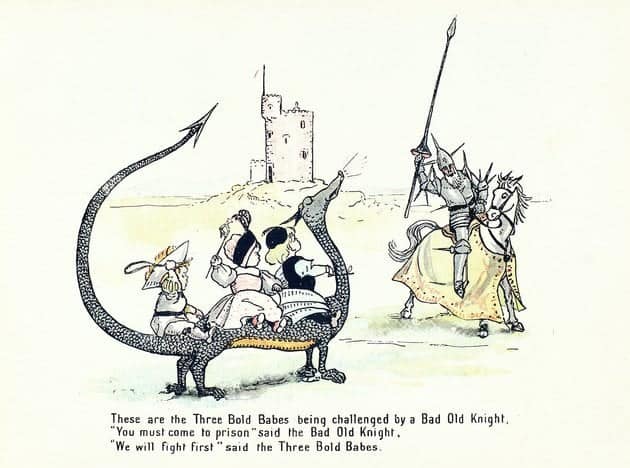
GIRLS WHO REFUSE TO MARRY
Young women and girls who refuse to marry the men they’re expected to marry are pretty common throughout ancient tales from around the world. “The Frog Prince” is well-known in the West.
A Nigerian example is “The Disobedient Daughter”. A woman refuses every suitor who seeks her hand in marriage. When the perfect husband finally arrives, she defies her parents and marries him. But she is punished for this, learning that someone can seem perfect on the outside but not underneath.
If you’d like to hear “The Disobedient Daughter” read aloud, I recommend the retellings by Parcast’s Tales podcast series. (They have now moved over to Spotify.) These are ancient tales retold using contemporary English, complete with music and Foley effects. Some of these old tales are pretty hard to read, but the Tales podcast presents them in an easily digestible way. “The Disobedient Daughter” was published April 2020.
In August 2021, the same podcast also published “Cannetalla”, an Italian take on the same tale. A young woman is so ‘fussy’ about the men her father brings for her to marry (he only introduces her to a few), she ends up married to a literal ogre who keeps her locked up and doesn’t feed her. This is her punishment for refusing to marry someone her father picks.
